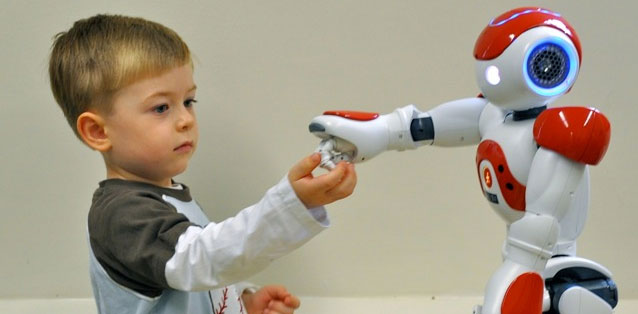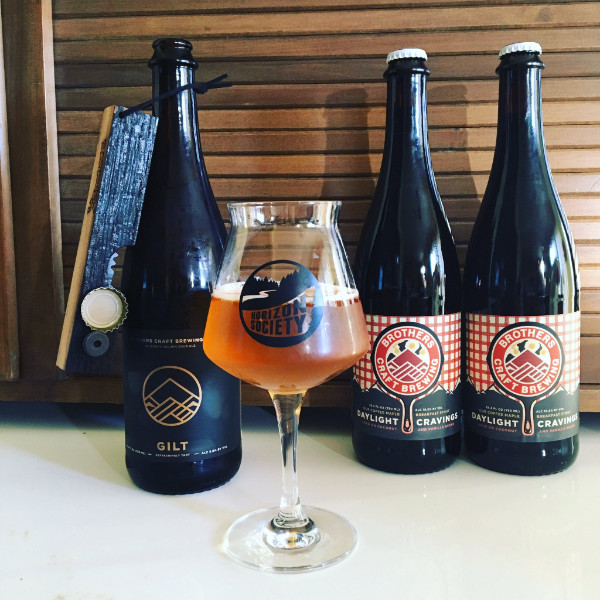🤖 + 🍺 Bots and Beer 0x06 - Autism and Robotics
The Bots + Beer newsletter ran for about 3 years between 2017-2020 during a time when I was highly involved in chatbot and artificial intelligence development. It was eventually folded into Codepunk as part of the Codepunk newsletter.
Some portions of this newsletter were contributed by Bill Ahern.

ChartaCloud is the robotics company behind NAO and Pepper. You might not know the company, but you've seen the robots. Their photos are used in almost every article about robot assistants—even when they aren't the actual robots or chatbots being talked about in the article. In fact, I once made a joke about it in a previous newsletter.
I first came across ChartaCloud and the NAO robot in a program on CuriosityStream called The Age of Robots. NAO struck me as an amazingly designed robot because of its advanced articulation and fluid movements. I subscribe to their email newsletter, and maybe one day I'll have enough cash to actually buy one of their robots.
In the latest newsletter, there's a note from Karen Simmons--the CEO of Autism Today--applauding their efforts in the emerging Robot-Mediated Behavior Intervention space. ChartaCloud offers pre-installed behavioral intervention software with their robots, and they'll soon be integrating autism practice management software as well.
Back in our third issue of this newsletter, we gave too little time to a story about a school in New Jersey using robots for education. The Phoenix Center in Essex County, NJ is using the NAO robot and the Robot-Mediated Behavior Intervention program mentioned above. The stature of the robot and its plain, stoic face make it less intimidating to the students, while also portraying an air of playfulness. The programmatic interface to the robot, allows for easily built applications and games to be installed on the robot, giving it a means to teach, while doing so in a manner that children will find engaging, including those children with autism.
The key to ChartaCloud's success is that not only do they have viable technology, but also a robotic design that reduces intimidation, and prevents snap judgements from humans. This is by design, and Disney (yes, Disney) recently released a research paper detailing much of this design aesthetic. Disney concluded that the key to establishing good relationships between humans and robots is for humans to see the robot's behavior as predictable. NAO is consistent, and physically, is almost child-like, making it appealing to children and children with autism.
First and foremost, autism is a communication deficit, and breaking through these communication barriers provides significant changes in the lives of those with autism. We've seen how service animals can make an amazing impact. Are robots that far behind? They're certainly beginning to invade the personal assistant arena. Why wouldn't service robots be next?
Furthermore, robotics, virtual reality, augmented reality, mobile apps and cell phones… these are all things that 10-20 years ago were either too futuristic, too expensive, or too hard to program for. Today? ChartaCloud's robotics, Microsoft's HoloLens, and programming utilities like Progressive Web App builders, Xamarin, and Cordova have made all of these things cheaper, more real, and easier to program for than ever before. This is lowering the barrier of entry so that those who have dedicated their lives to helping those with autism have the tools necessary to enact change.
Here's to the next 10 years, and the wonders it will bring for children with autism.
NAO Robots as Language Teachers
If it seems like NAO is taking over the teaching/robotics space, that's probably because they are. In this Finnish school, students are learning language from NAO and three other robots, taking advantage of the comfort that students feel around humanoid robots that don't pass judgement. This shows that NAO is not just suited for working with children that have autism, but children of all ages, in a variety of tasks where it might be more comfortable to talk to a robot instead of a human.
It's Not Just Cognitive
Technology isn't just impacting those with communication or cognitive deficits, but those with physical disabilities are the ones that might have the most to gain. Every day we're reading more and more about how brain interfaces are allowing people to control robotic limbs. Thomas Reardon of CTRL-Labs recently demonstrated some newer techniques in detecting electrical impulses from muscles--looking for a non-invasive way to allow those with physical needs to control external limbs without brain surgery.
Bot Framework: Suggested Actions without Sending a Response to Chat
After the third time I answered the question about suggested actions in Bot Framework without echoing back to the chat window, I decided to write a blog post about it.

YOpener
Forget about the beer in this picture (although they were all great). Pay attention to that wood block hanging off the Gilt bottle. That's called a YOpener. It's made by a guy in Oklahoma who started the company as a hobby so that he and his autistic son could work on a project together. It has a dull, serrated cut-out for ripping through wax-sealed bottles, while the screw head at the top fits just under the cap, so you can pry the beer bottle cap off. There's a magnet in it too, so not only does the cap stick to the YOpener, but you can stick the YOpener to your refrigerator door.